The yellow grosbeak is the largest songbird of the grosbeak family, with a weight that almost doubles that of a black-headed grosbeak. While their stunning bright yellow feathers are a sight to behold, they're rarely spotted outside Mexico.
The yellow grosbeak (Pheucticus chrysopeplus) is a member of the Cardinalidae family and has very similar features to the Northern cardinal. It lives primarily in Mexico, but some vagrants have been spotted as high north as Arizona and California.
They are known for their remarkable yellow plumbage, giant conical-shaped bills, and bulky frames.
While the yellow grosbeak shares a lot in common with the evening grosbeak, differences in size, habitats, and color patterns are much different between these two yellow songbirds.
What Does a Yellow Grosbeak Look Like?
The yellow grosbeak has distinguishing features that make it stand apart from other yellow songbirds. Male yellow grosbeaks have bright yellow patches on their head, underparts, and along their backside.
While their frame is big and bulky (slightly larger than a Northern cardinal), they have short tails comprised of black and white feathers. They have a wingspan of 14.5 inches with white wing patches and black and white tips.
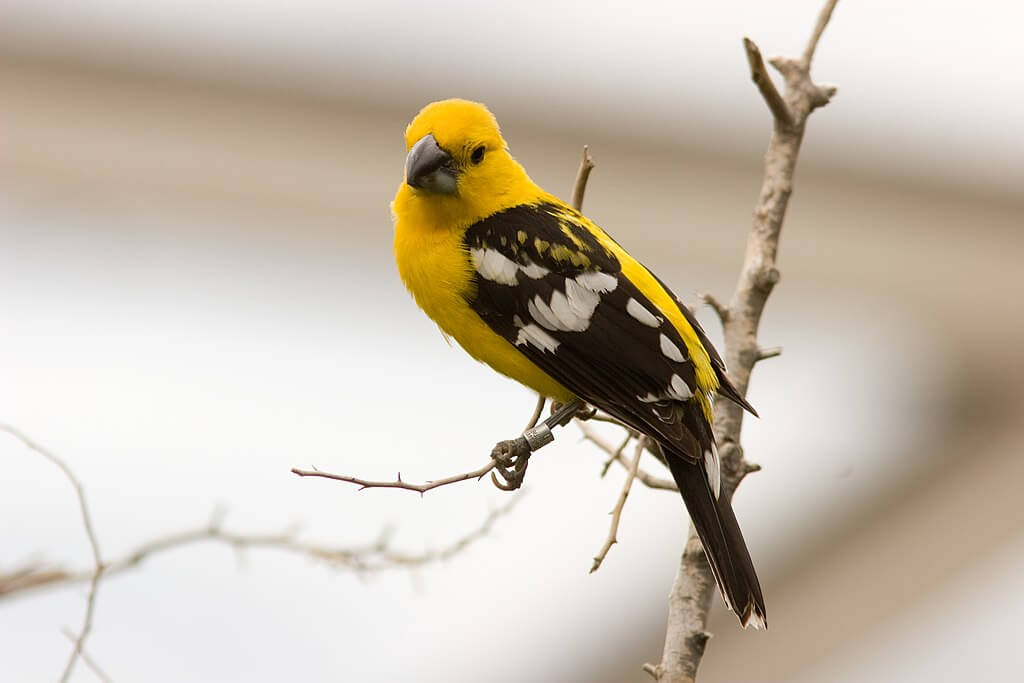
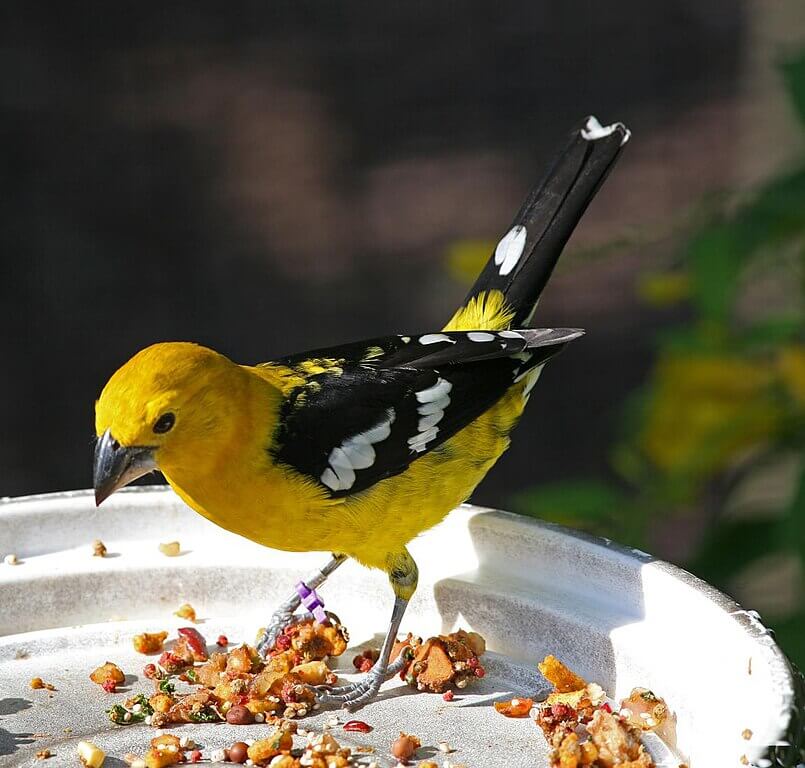
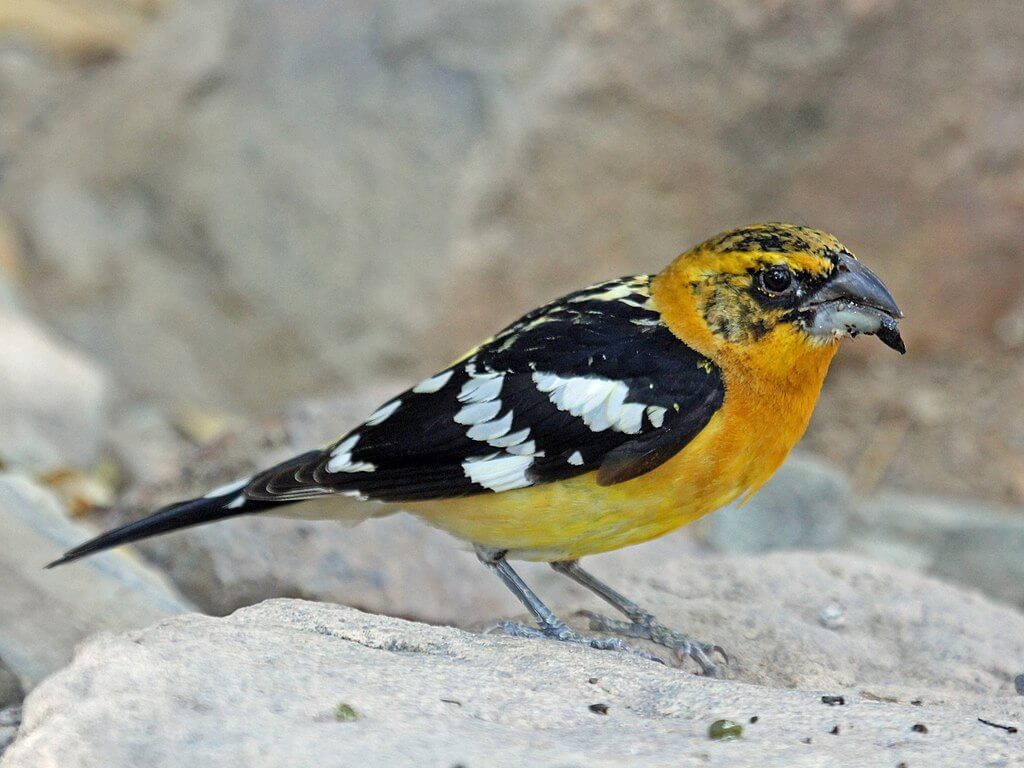
What colors do yellow grosbeaks have?
The coloring of a yellow grosbeak is very similar to a goldfinch, but these two birds are not mistaken. The American goldfinch is petite, while the yellow grosbeak is large and chunky with exaggerated features.
Their conical bills, for example, are distinctive and appear too big for their tiny heads! Their stark black tails with white patches are also unique to the yellow grosbeak.
How big is a yellow grosbeak?
It’s also important to note that yellow grosbeaks are very large birds. While they have a build similar to a Northern cardinal, they weigh twice as much!
A Northern cardinal weighs around 1.5 ounces, while a yellow grosbeak weighs in at 2.2 ounces on average.
Where do yellow grosbeaks live?
The yellow grosbeak lives in areas year-round in Central America, mostly along the west coast of Mexico. They are often found in larger numbers further south in areas such as Guatemala.
They make their homes in wide open spaces, primarily in thickets, small trees, scrublands, or semi-open woodlands. Unlike similar species of grosbeak, such as the yellow evening grosbeak, this bird species does not reside in coniferous forests. They often prefer much warmer climates and rarely travel further north than Mexico.
What is the main food of a yellow grosbeak?
- Seeds: They are particularly fond of seeds from conifers, deciduous trees, and weed plants.
- Fruits: They feed on berries, wild fruits, and even soft fruits.
- Insects: While seeds and fruits are their primary food sources, yellow grosbeaks may also supplement their diet with insects, especially during the breeding season.
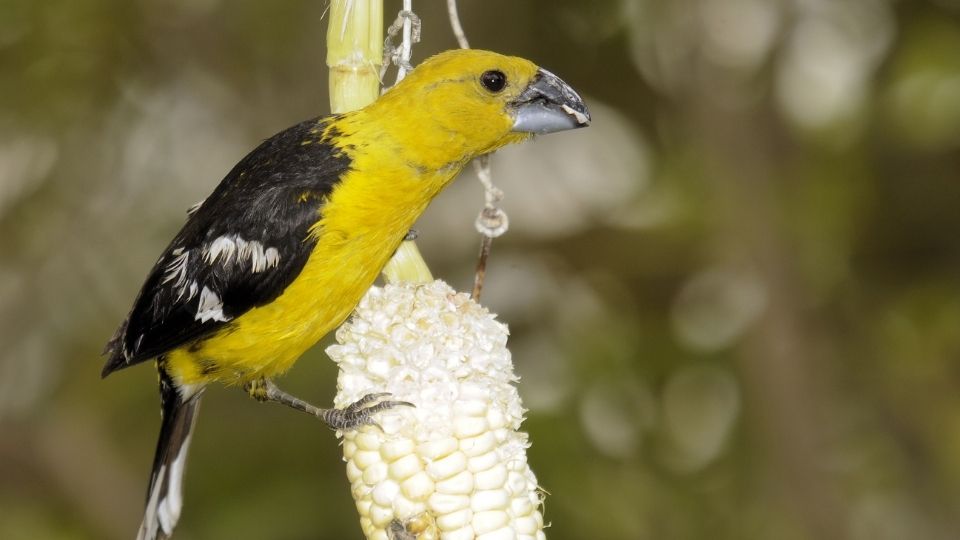
Do Yellow Grosbeaks Migrate?
The yellow grosbeak isn’t a migratory bird, but its vagrants have been known to travel to cooler climates in the non-breeding season in search of more plentiful food sources.
These songbirds are full-time residents of the eastern coast of Mexico, and some populations near the north of Mexico often irrupt a very short distance down the Mexican coast during the breeding season.
It’s important to note that spotting a yellow grosbeak in the United States is incredibly rare. Still, there have been some vagrant sightings in the United States in places such as Arizona and California. While these sightings are infrequent, they can happen.
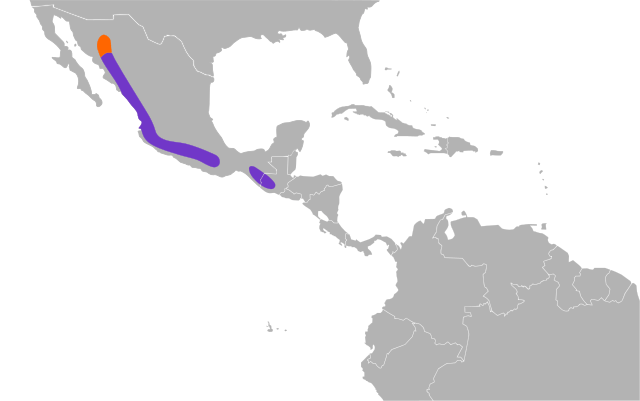
What Are Their Mating Rituals?
During mating season, the yellow grosbeak song is similar to an evening grosbeak or a rose-breasted grosbeak. It has a warbling whistle-like song that they use to attract a mate. Unlike other grosbeaks, the yellow grosbeak’s warbling song is much shorter and only lasts a few seconds.
San José del Chilar, San Pedro Jaltepetongo, Oaxaca
Once a female selects a mate, she builds a nest in a location that is near the ground, often in a shrubby or bushy area that offers plenty of protection from predators.
If you want to spot the nest of these secretive Passeriformes, keep your eyes closer to the ground instead of up in the trees!
What About Nesting and Eggs?
Yellow grosbeak nests are loosely constructed and bulky. They are composed of plant materials such as leaves, grass, and twigs. While each nest is clunky, the shallow cup is small and tightly woven.
Once the constitution of the nest is completed, female yellow grosbeaks lay between two to five eggs per brood. The breeding season of the yellow grosbeak is short, and many only raise one brood of young birds per season.
Like the North American black-headed grosbeak, both parents take turns incubating the eggs in the nest. While the female is out savaging for sunflower seeds and birdfeeder offerings, the male will sit on the nest to incubate the eggs. Even after the eggs hatch, the male yellow grosbeak has an active role in raising young fledglings.

Are Yellow Grosbeaks Endangered?
Populations of yellow grosbeaks are small, but it doesn’t mean that they are endangered. Despite their minimal and sometimes dwindling numbers, the yellow grosbeak species has a ‘least concern’ conservation status.
Since they live in a tiny corner of Mexico, lower populations demonstrate that this bird sticks to its breeding grounds and doesn’t travel outside its native habitats. While some yellow grosbeaks have been spotted in the United States, many believe these sightings are fleeing captive birds.
What to read next: Grosbeak Superfamily Of Species: Habitats And Lifespans

